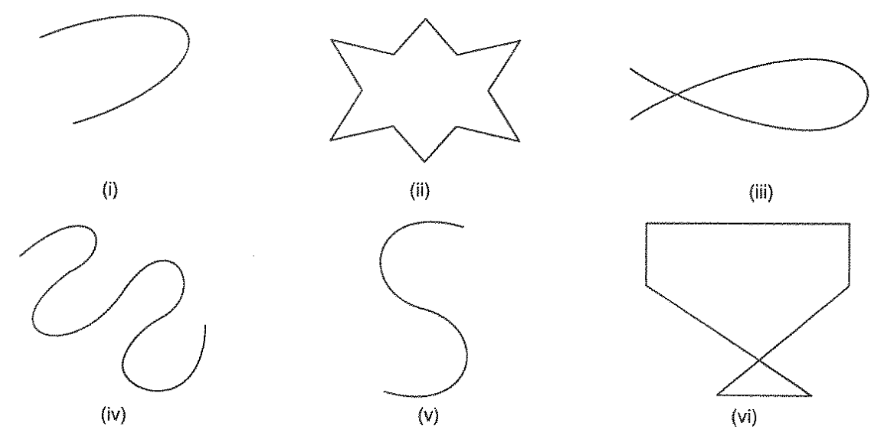Classify the following into open, closed and isolated system.
Boiling tea kept in a thermos.
To classify the boiling tea kept in a thermos into open, closed, and isolated systems, we can follow these steps:
Step 1: Understand the Types of Systems
- Open System: In an open system, both mass and energy can be exchanged with the surroundings. For example, tea in an open cup can lose heat to the environment and also lose mass as steam escapes.
- Closed System: In a closed system, energy can be exchanged with the surroundings, but mass cannot. An example would be tea in a closed pan where heat can escape, but the tea itself remains contained.
- Isolated System: In an isolated system, neither mass nor energy can be exchanged with the surroundings. An example is a thermos bottle, which is designed to keep the contents insulated from the environment.
Step 2: Analyze the Given Scenario
- The question states that we have boiling tea kept in a thermos.
Step 3: Determine the Type of System
- A thermos is designed to minimize heat transfer and prevent mass loss. Thus, the boiling tea inside a thermos does not lose heat (energy) to the surroundings and does not lose mass as it is sealed.
Conclusion
- Therefore, boiling tea kept in a thermos is classified as an isolated system because there is no loss of energy or mass.
---
- Open System: In an open system, both mass and energy can be exchanged with the surroundings. For example, tea in an open cup can lose heat to the environment and also lose mass as steam escapes.
- Closed System: In a closed system, energy can be exchanged with the surroundings, but mass cannot. An example would be tea in a closed pan where heat can escape, but the tea itself remains contained.
- The question states that we have boiling tea kept in a thermos.
- A thermos is designed to minimize heat transfer and prevent mass loss. Thus, the boiling tea inside a thermos does not lose heat (energy) to the surroundings and does not lose mass as it is sealed.
- Therefore, boiling tea kept in a thermos is classified as an isolated system because there is no loss of energy or mass.
Topper's Solved these Questions
- CHEMICAL THERMODYNAMICS Book:ICSEChapter:CHEMICAL THERMODYNAMICS Exercise:REVIEW EXERCISES (Fill in the blanks )
Explore 6 Videos
- CHEMICAL THERMODYNAMICS Book:ICSEChapter:CHEMICAL THERMODYNAMICS Exercise:VERY SHORT ANSWER TYPE QUESTIONS
Explore 56 Videos
- CHEMICAL THERMODYNAMICS Book:ICSEChapter:CHEMICAL THERMODYNAMICS Exercise:NCERT TEXT-BOOK. EXERCISES
Explore 22 Videos
- CHEMICAL BONDING AND MOLECULAR STRUCTUREBook:ICSEChapter:CHEMICAL BONDING AND MOLECULAR STRUCTUREExercise:NCERT TEXT-BOOK EXERCISES ( WITH HINTS AND SOLUTIONS)
Explore 47 Videos
- CLASSIFICATION OF ELEMENTS AND PERIODICITY IN PROPERTIESBook:ICSEChapter:CLASSIFICATION OF ELEMENTS AND PERIODICITY IN PROPERTIESExercise:NCERT TEXT-BOOK. EXERCISE (With Hints and Solutions)
Explore 63 Videos
Similar Questions
Classify the following into open, closed and isolated system.
Boiling of milk in a pan.
View SolutionClassify the following into open, closed and isolated system.
Hot food kept in a sealed metallic container.
View SolutionClassify the following as open or closed curves:

View SolutionClassify the following into open, closed or isolated system :
(i) Animals and plants
(ii) A referigerator or a fridge
(iii) A solar cooker
View SolutionClassify the following as open, closed, or isolated system.
a. A beaker containing as open, boiling water.
b. A chemical reaction taking place in an enclosed flask.
c. A cup of tea placed on a table.
d. Hot water placed in perfectly insulated closed container.
e. A thermos flask containing hot coffee.
View SolutionClassify the following curves as open or closed:

View SolutionWhich of the following is true about isolated system?
View SolutionWhich of the following has closed circulatory system ?
View SolutionWhich of the following has closed circulatory system ?
View SolutionClassify the following curves as open. Simple closed and not simple closed.

View Solution